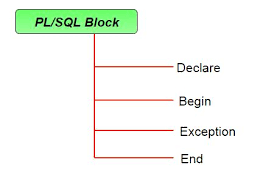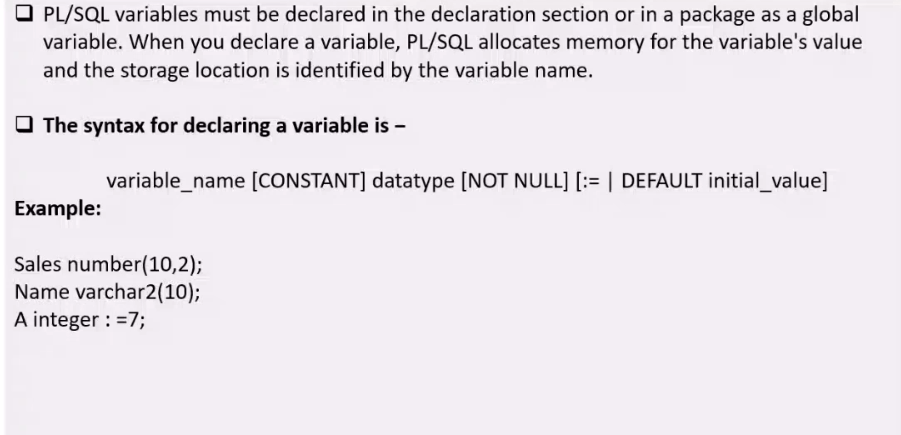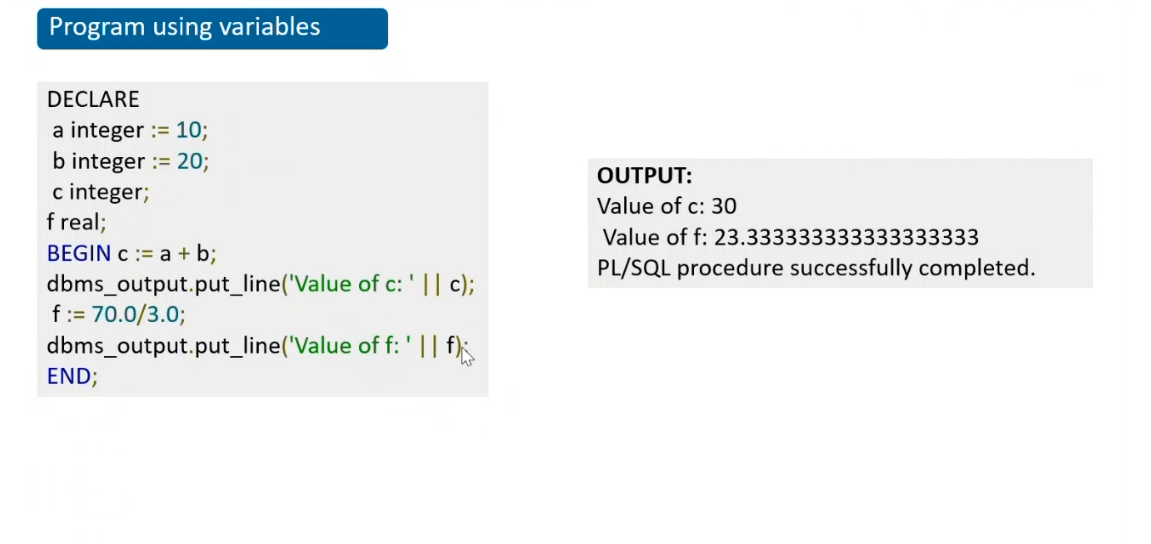Mastering PL/SQL : Syntax, Identifiers , Comments , Declaration , Datatypes (Part-1) .
 Sahitya Gupta
Sahitya Gupta
What PL/SQL ?
PL/SQL is nothing but a combination of SQL along with the procedural features of programming language. It means that in SQL we run query one at a time but in PL/SQL we make a program in which we use SQL and that program works similar like you all must have seen in C,C++ or Java.
SYNTAX
Basic Syntax of PL/SQL which is a block-structured language; this means that PL/SQL programs are written in logical block of code. Each block of code consist of three subparts :-

DECLARE - This section starts with the keyword DECLARE . Its an option section and defines variables , cursors , subprogram and other elements to be used in the program.
BEGIN - This section starts with the keyword BEGIN . It consists of executable PL/SQL statements of the program . It should have at least one executable line of code , which may be just a null command to indicate that nothing should be executed. In layman's language , in the block of BEGIN we have to write our main code which we want to execute like we do in C language after declaration of variables we write the main code . If you don't understand just be cool and read further .
EXCEPTION - This section starts with the keyword EXCEPTION . This optional section contain exceptions that handle errors in the program.
END - This section starts with the keyword END . It is used at the end of the program.
DECLARE
message varchar2(20) := 'Hello World';
BEGIN
dbms_output.put_line(message);
END;
This is the basic syntax of PL/SQL.
Mostly used Data types of PL/SQL👈

These are the few data types which often used in PL/SQL Programming.
How to Declare a Variable?

Here in this example 👆👆 Sales(10,2) is a variable which has Data Type Number and that variable can hold maximum 10 digit number and decimal before 2nd last digit.
Let's understand with some more example.👇👇

Here in this example 👆👆 f is a variable which can store a real number that's why value of f is resulted in real.
ADD program in PL/SQL
DECLARE
var1 number(5);
var2 number(3);
var3 number(4);
BEGIN
var1:=4;
var2:=66;
var3:=var1+var2;
dbms_output.put_line('The Output is = '||var3);
END;
Understanding the above program 👆👆
In the DECLARE section I declared 3 variables with name var1 , var2 , var3 with length 5 ,3 ,4 it means var1 can hold a maximum 5 digit number and same concept goes with var2 & var3. In the next begin section I assigned value of 4 in var1 , 66 in var2 , added var2 & var1 in var3 in the 2nd last line I printed var3 and ended the program.
Which are Identifiers in PL/SQL?
PL/SQL identifiers are constants , cursors , variables , exceptions , procedures and reserved words. The identifiers consist of letters , numerals , dollar signs , under scores and number signs and should not exceed 30 characters.
How to Comment in PL/SQL ?
Single line comment - use delimiters -- (double hyphen).
Multil line comment - these comments are enclosed by / /
<------------END-------------->
Subscribe to my newsletter
Read articles from Sahitya Gupta directly inside your inbox. Subscribe to the newsletter, and don't miss out.
Written by
